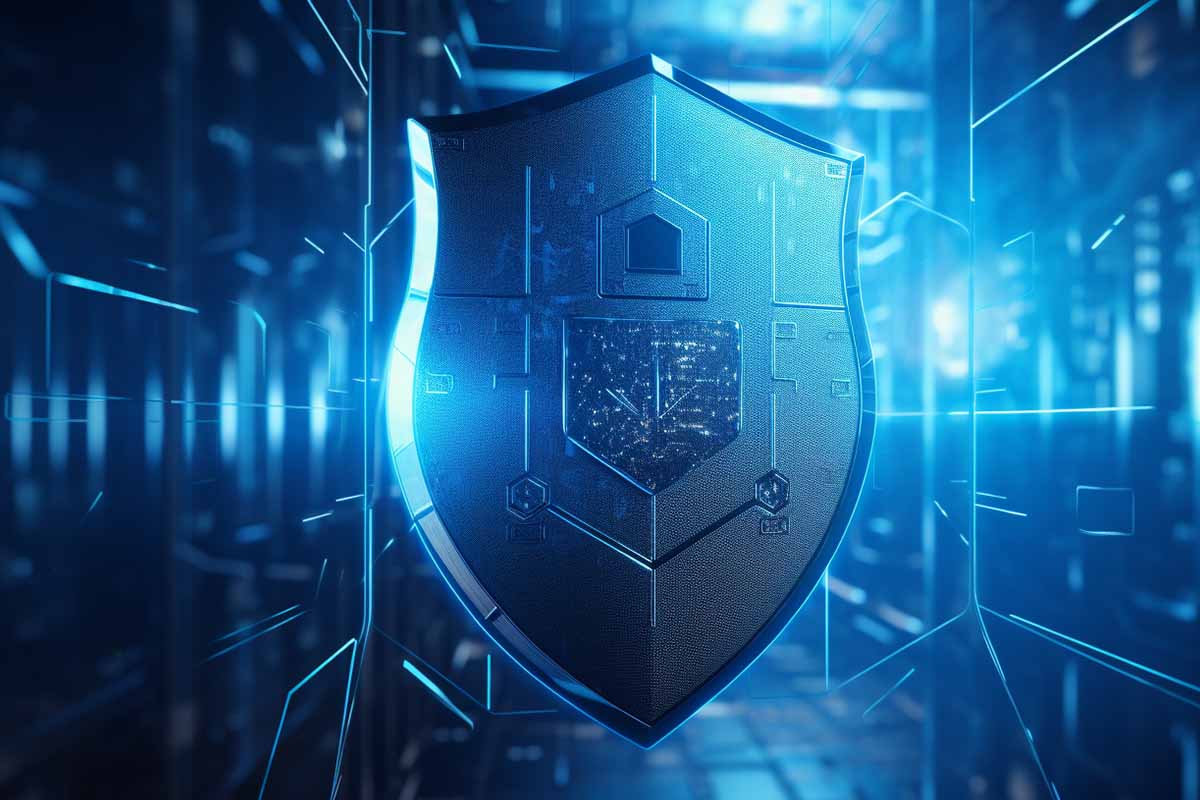Understanding operating system vulnerabilities is crucial for defending against a wide range of cybersecurity threats. Operating systems, being the foundation of our digital devices, are prime targets for attackers. This blog post explores the intricate nature of these vulnerabilities, the impact of major cyber attacks, and strategies for robust defense.
Understanding Operating System Vulnerabilities
Operating system vulnerabilities represent critical weak points in the security infrastructure of any digital system. These vulnerabilities are potential exploits that can be used by attackers to gain unauthorized access or cause damage. A deeper understanding of these vulnerabilities is essential for effective cybersecurity.
Origins of Vulnerabilities: Operating system vulnerabilities often originate from various sources, such as:
- Programming Errors: Mistakes in code can create security loopholes.
- Complex Software Interactions: Unexpected interactions between different software components can lead to vulnerabilities.
- Legacy Code: Older sections of code that haven’t been updated or reviewed can be a source of vulnerabilities.
- Third-Party Integrations: External software or plugins integrated with the OS can introduce vulnerabilities.
Types of Common Vulnerabilities: There are several types of vulnerabilities commonly found in operating systems:
- Buffer Overflow: Occurs when a program writes more data to a buffer than it can hold, potentially allowing attackers to overwrite memory locations.
- Privilege Escalation: An exploit that allows a user to gain higher access levels than intended, leading to unauthorized control over system functions.
- Injection Flaws: These occur when an attacker can insert malicious code into a program, often seen in SQL, NoSQL, OS, and LDAP injections.
- Unpatched Software: Vulnerabilities that exist in outdated software or systems where security patches have not been applied.
- Zero-Day Exploits: These are vulnerabilities that are exploited by attackers before the software vendor has released a fix or even knows about the vulnerability.
Vulnerability Detection and Analysis: To mitigate these risks, it’s crucial to regularly perform software vulnerability analysis:
- Security Audits: Conduct thorough security checks and audits to find potential vulnerabilities.
- Automated Scanning Tools: Use automated tools to regularly scan for known vulnerabilities.
- Penetration Testing: Employ ethical hacking techniques to test the system’s defenses.
The Impact of Vulnerabilities: The exploitation of these vulnerabilities can lead to various security breaches and attacks:
- Data Breach: Unauthorized access to confidential data.
- System Compromise: Complete takeover of the operating system, leading to loss of control over system functionalities.
- Malware Spread: Use of vulnerabilities to spread malware, ransomware, or other malicious software.
Mitigation Strategies: Mitigation of these vulnerabilities involves several strategies:
- Regular Updates and Patches: Ensuring all software and the OS itself are up-to-date with the latest security patches.
- Reducing Attack Surface: Minimizing the number of system components exposed to potential attack.
- Access Control: Implementing strict user access controls to minimize the impact of a potential exploit.
- Security Awareness: Educating users about safe practices to prevent social engineering and phishing attacks.
Understanding operating system vulnerabilities is a complex but vital part of maintaining cybersecurity. It involves not only awareness of the types of vulnerabilities but also a proactive approach to detecting, analyzing, and mitigating them. As the digital landscape evolves, staying informed and vigilant becomes increasingly important to protect against the sophisticated threats these vulnerabilities present.
Free CompTIA A+ Training
Ready to launch your IT career? Get a 7-day free trial of our top-rated CompTIA A+ training series. Dive into the world of technology with our Free CompTIA A+ Core Series, and take the first step towards success!
Major Operating System Attacks: Case Studies
Several high-profile cyber attacks have exploited operating system vulnerabilities, including malware and ransomware:
- WannaCry Ransomware (2017): Exploited a Windows OS vulnerability, encrypting data and demanding ransom.
- Petya Attack: Similar to WannaCry, Petya caused global disruption using an OS exploit.
These case studies demonstrate the severe impact and the evolving nature of cyber attack trends, emphasizing the need for proactive security measures.
The Role of Patch Management in Cybersecurity
Patch management is a critical element in the cybersecurity framework, playing a key role in protecting operating systems from vulnerabilities. It involves the process of acquiring, testing, and installing multiple patches (code changes) on existing applications and software tools on a computer, ensuring systems are up-to-date and resistant to hacking and malware attacks.
Importance of Patch Management: Patch management is crucial for several reasons:
- Closing Security Gaps: Patches often address security vulnerabilities. Delay in applying these patches can leave systems exposed to exploits.
- Maintaining System Integrity and Functionality: Patches not only fix security issues but also correct other software bugs and improve performance, ensuring the system runs smoothly and efficiently.
- Compliance: For many organizations, staying current with patches is a compliance requirement, as outdated systems can pose risks to data protection and privacy.
Challenges in Patch Management: Despite its importance, patch management comes with its own set of challenges:
- Resource Allocation: It requires time and resources to properly test and deploy patches, which can be challenging for organizations with limited IT staff or resources.
- Compatibility Issues: Patches can sometimes cause issues with existing software or systems, requiring thorough testing before deployment.
- Keeping Up with Updates: With the frequent release of patches, especially in environments with multiple systems and applications, keeping up-to-date can be overwhelming.
Best Practices in Patch Management: Implementing effective patch management strategies involves several best practices:
- Establish a Patch Management Policy: Define a clear policy for how patches should be managed. This policy should include how to handle different types of patches (security, feature updates) and outline the process for testing and deployment.
- Prioritize Patches: Not all patches are of equal importance. Prioritize patches based on the severity of the issue they address, focusing first on critical security patches.
- Automated Patch Management Tools: Utilize tools that automate the process of patch discovery and installation. Automation can help in managing the volume of patches and reduce the likelihood of human error.
- Regularly Schedule Patch Updates: Set a regular schedule for reviewing and applying patches. This helps in staying on top of security updates and reduces the chances of missing critical patches.
- Testing Before Deployment: Test patches in a controlled environment before full deployment to ensure they do not interfere with existing systems or cause new security vulnerabilities.
- Audit and Documentation: Keep detailed records of all patches, including what was applied, when, and any issues encountered. This documentation is vital for troubleshooting, compliance, and security audits.
- User Education: Educate users about the importance of applying updates on their personal devices. This is especially important in a Bring Your Own Device (BYOD) environment.
- Continual Review and Improvement: Regularly review the patch management process and make improvements. As new threats emerge and technologies evolve, so should your approach to patch management.
In conclusion, effective patch management is a vital defense against the exploitation of operating system vulnerabilities. It requires a strategic approach, combining policy, prioritization, automation, and regular review to ensure that computer systems remain secure, functional, and compliant with regulatory standards.

Information Security Manager Career Path
Propel your career forward and be part of an essential member of any management team as an Information Security Manager. This advanced training series is designed specifically for those want to move up into a management position in the IT field.
Emerging Trends and Future Threats in Cybersecurity
As technology continues to evolve at a rapid pace, so too do the threats and vulnerabilities in the field of cybersecurity. Staying ahead of these trends is critical for effective defense strategies. Here’s an insight into some of the emerging trends and potential future threats in cybersecurity:
1. Sophistication of AI and Machine Learning:
- AI in Cyber Attacks: There’s a growing use of artificial intelligence (AI) by cybercriminals to conduct more sophisticated attacks. AI can be used to automate the collection of data, identify vulnerabilities quicker, and even mimic trusted users.
- AI in Defense: Conversely, AI and machine learning are also being leveraged in cybersecurity for predictive analytics, identifying potential threats before they become active.
2. Internet of Things (IoT) Vulnerabilities:
- IoT devices are proliferating at an unprecedented rate, often with inadequate security measures. This creates new vulnerabilities, particularly in areas like home security systems, smart appliances, and connected vehicles.
3. Cloud Security:
- With more businesses moving to cloud-based services, securing these environments against data breaches, hijacking, and other cyber threats is becoming increasingly complex.
4. Rise of Ransomware-as-a-Service:
- Cybercriminals are offering ransomware services to others on a subscription basis, making it easier for non-technical criminals to launch ransomware attacks.
5. Mobile Device Vulnerabilities:
- The increasing reliance on mobile devices for both personal and professional use has made them a lucrative target for attackers, with threats ranging from app-based vulnerabilities to sophisticated mobile phishing attacks.
6. Supply Chain Attacks:
- Cyber attacks targeting the supply chain of organizations have been on the rise. These attacks focus on infiltrating software providers or manufacturing processes to affect multiple victims down the chain.
7. Zero-Day Exploits:
- The discovery and exploitation of zero-day vulnerabilities, for which no fix has yet been released, continue to be a significant threat. The race between attackers finding these vulnerabilities and developers patching them is intensifying.
8. Deepfakes and Disinformation:
- The use of AI to create deepfakes—highly realistic and convincing fake audio and video—is expected to increase, potentially being used for phishing scams or to spread disinformation.
9. Cryptocurrency and Blockchain Attacks:
- As cryptocurrency becomes more mainstream, the incentive for attacking blockchain-based systems grows. This includes both attempts to steal cryptocurrency and attacks on the underlying blockchain technology.
10. Quantum Computing:
- The advent of quantum computing poses a future threat to current encryption standards. Quantum computers could potentially break many of the cryptographic protocols that currently secure our digital communications.
In response to these emerging threats, cybersecurity strategies must evolve continuously. This involves not just implementing robust security measures, but also staying informed about the latest developments, training staff, and preparing for potential threats that may arise with new technological advancements. Understanding these trends is essential for proactive defense and ensuring long-term digital security.

Lock In Our Lowest Price Ever For Only $14.99 Monthly Access
Your career in information technology last for years. Technology changes rapidly. An ITU Online IT Training subscription offers you flexible and affordable IT training. With our IT training at your fingertips, your career opportunities are never ending as you grow your skills.
Plus, start today and get 10 free days with no obligation.
Conclusion
Operating system vulnerabilities pose significant security challenges. However, with a deep understanding, regular updates, and adherence to IT security measures, these risks can be effectively managed. It’s crucial to remain vigilant and continuously update security strategies to safeguard digital assets against evolving threats.
Frequently Asked Questions Related to OS Vulnerabilities
What Are the Most Common Types of Operating System Vulnerabilities?
The most common types of operating system vulnerabilities include buffer overflows, privilege escalation errors, injection flaws, unpatched software vulnerabilities, and zero-day exploits. These vulnerabilities can result from programming errors, outdated software, or insecure software integrations.
How Can Individuals and Organizations Protect Their Systems from Cyber Attacks?
Protection strategies include regular software updates and patch management, using robust antivirus and firewall protection, practicing safe browsing habits, employing encryption for data protection, and educating users about phishing and social engineering tactics. Additionally, conducting regular security audits and penetration testing can help identify and mitigate vulnerabilities.
What Are Emerging Cybersecurity Threats That Organizations Should Be Aware Of?
Key emerging threats include AI-powered cyber attacks, IoT vulnerabilities, cloud security challenges, the rise of Ransomware-as-a-Service, mobile device vulnerabilities, supply chain attacks, zero-day exploits, deepfakes and disinformation campaigns, attacks on cryptocurrency and blockchain technology, and potential threats from quantum computing.
Why Is Patch Management Critical in Cybersecurity?
Patch management is critical because it involves the regular updating and fixing of software to address security vulnerabilities. Timely application of patches closes security gaps, maintains system integrity, and ensures compliance with data protection standards. Effective patch management reduces the risk of cyber attacks exploiting known vulnerabilities.
How Is AI Impacting Cybersecurity for Better and Worse?
On the positive side, AI and machine learning are being used in cybersecurity for predictive analytics, threat detection, and automated response to incidents. However, AI is also being utilized by cybercriminals to automate attacks, identify vulnerabilities faster, and create more sophisticated phishing and social engineering tactics. The dual use of AI in both defense and offense in cybersecurity represents a significant shift in the cyber threat landscape.

























